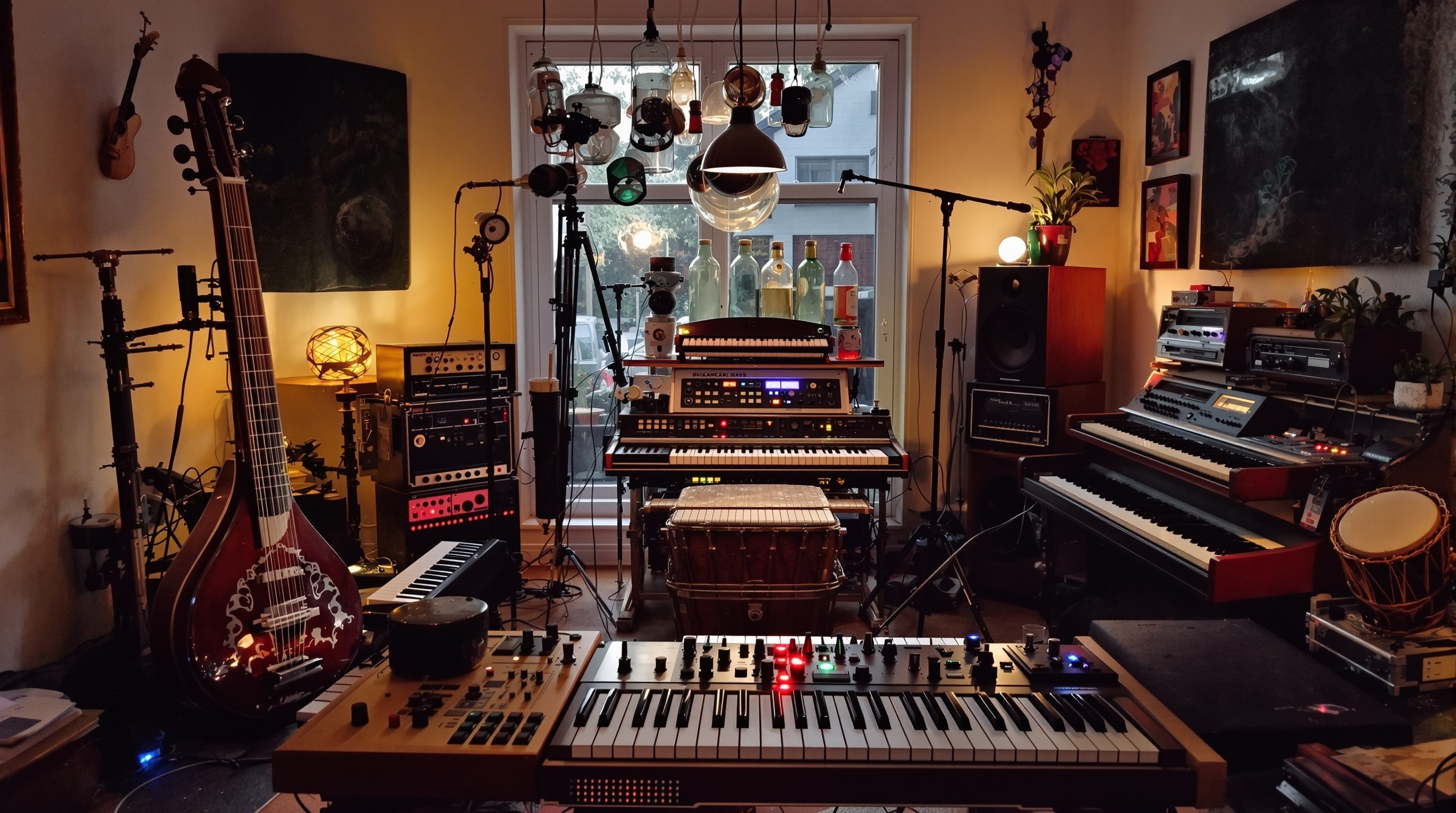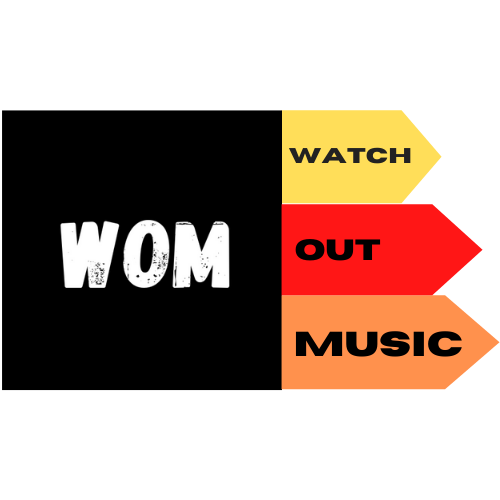
LET’s GO
You’re about to discover the secrets to creating music hooks that stick in listeners’ minds and keep them humming for days.
In this comprehensive guide, you’ll learn how to craft an irresistible hook, starting with simple and repetitive elements, using melodies, rhythms, or lyrics that anchor your song.
You’ll explore classic chord progressions, syncopated rhythms, and powerful bass lines to create a catchy foundation. You’ll add emotional depth with vivid imagery and universal themes, and experiment with sound design and unconventional instruments.
By refining your melody with targeted feedback and optimizing your lyrics, you’ll be on the right track to create hooks that leave a lasting impression in the 2025 music landscape.
Key Points
- Focus on simplicity, clarity, and repetition to create effective hooks that engage audiences and stick in their minds.
- Use classic chord progressions, seventh chords, and variations to create a solid foundation for your hook.
- Experiment with melodic repetition, syncopation, and unusual time signatures to build catchy and memorable rhythmic patterns.
- Add emotional depth to your hook by evoking universal emotions through vivid imagery and authentic lyrics.
- Refine your melody through feedback, testing, and iteration to elevate it to unforgettable status and leave a lasting impression on listeners.
Understanding Hook Fundamentals
You’re about to create music hooks that stick in listeners’ minds, but first you need to understand the basics.
A hook is a short, catchy idea that repeats in a song. It’s usually the most memorable part, making it essential for your track’s success. Hooks can be melodies, rhythms, lyrics, or even a combination of these elements.
Elements of Effective Hooks
| Hook Element | Description | Example |
|---|---|---|
| Melody | The tune that listeners hum or sing | “Beat It” by Michael Jackson |
| Rhythm | The pattern of sounds and silences | “We Will Rock You” by Queen |
| Lyrics | Memorable words or phrases | “I Want It That Way” by Backstreet Boys |
| Instrumentation | Distinctive sound or instrument | “Seven Nation Army” by The White Stripes |
| Repetition | Strategic reuse of musical elements | “Uptown Funk” by Mark Ronson ft. Bruno Mars |
Hooks are often simple, yet incredibly effective. Think of a hook as a musical anchor, keeping your audience engaged and humming your tune long after it’s over.
To create hooks that resonate, focus on:
- Simplicity
- Clarity
- Repetition
Use hooks to build anticipation, create tension, and evoke emotions in listeners.
Developing Memorable Melodic Ideas

As you immerse yourself in developing memorable melodic ideas, remember that simplicity is the key to success. Don’t complicate things – focus on creating a clear, repetitive structure that listeners can easily latch onto.
Melody Creation Techniques
- Repetition and variation: Repeat and vary your melodic phrases to create anticipation and release
- Space and silence: Use them to create contrast and add emotional depth
- Melodic shapes: Experiment with different patterns like ascending or descending lines
- Familiar motifs: Don’t fear using familiar melodic references that tap into collective consciousness
- Question and answer phrases: Create musical conversations within your hook
By keeping it simple yet nuanced, you’ll create melodies that stick in listeners’ minds and have them humming your tune.
Effective Chord Progression Techniques
Now that you’ve created a memorable melody, it’s time to build a harmonic foundation that complements and enhances it. Simple chord progressions can make your melody shine.
Popular Hook Chord Progressions
| Progression | Chord Formula | Popular Examples |
|---|---|---|
| The Classic | I-IV-V | “Twist and Shout” by The Beatles |
| Pop Standard | I-V-vi-IV | “Don’t Stop Believin'” by Journey |
| Melancholic | vi-IV-I-V | “Zombie” by The Cranberries |
| Jazz-Inspired | ii-V-I | “Autumn Leaves” standard |
| Emotional | I-vi-IV-V | “Stand By Me” by Ben E. King |
Try using the I-IV-V progression, a timeless classic that works wonders. Experiment with variations like I-V-vi-IV or I-ii-V-vi to add flavor. Don’t be afraid to borrow from your favorite songs – after all, the best artists “steal” from the greats!
Use seventh chords to add depth and tension. Remember, the goal is to support your melody, not overshadow it. Keep it simple, and you’ll be amazed at how these techniques can elevate your track.
Creating Catchy Rhythmic Patterns
A catchy rhythmic pattern can make your melody impossible to get out of listeners’ heads. You want to create rhythms that are infectious, energetic, and impossible to ignore.
Rhythm Development Strategies:
- Syncopation: Emphasize off-beat rhythms to add surprise and tension
- Repetition: Repeat a rhythmic phrase or motif to build anticipation
- Unusual time signatures: Try 5/4, 7/8, or other non-standard meters
- Polyrhythms: Layer multiple rhythmic patterns for complexity
- Micro-variations: Add subtle changes to keep repeated patterns fresh
For creating these patterns, experiment with syncopation, emphasizing off-beat rhythms to add surprise and tension. Try using repetition, too, where you repeat a rhythmic phrase or motif to build anticipation and release.
Don’t be afraid to get creative and try unusual time signatures or polyrhythms to add complexity and interest. Remember, the goal is to create a rhythmic pattern that’s both memorable and hummable.
Building Hooks With Bass Lines

You’ve created a rhythmic pattern that gets listeners nodding their heads, but it’s time to add something special to make your hook truly unforgettable.
Now, it’s time to introduce the bass line to give your hook some serious weight. A well-crafted bass line can make your hook more dynamic, more energetic, and more engaging.
Types of Bass Hooks
| Bass Hook Type | Characteristics | Effect on Listeners |
|---|---|---|
| Rhythmic Bass | Emphasizes strong beats, repetitive pattern | Creates physical movement, dance feel |
| Melodic Bass | Forward-moving, singable bass line | Provides secondary hook element |
| Walking Bass | Smooth, stepwise motion | Adds sophistication and momentum |
| Ostinato Bass | Short, repeating pattern | Creates hypnotic foundation |
| Contrapuntal | Interacts with melody in counterpoint | Adds complexity and interest |
Imagine:
- A fat, bouncy bass line that makes you want to move your hips
- A pulsing rhythmic foundation that underscores the energy of your hook
- A melodic bass line that adds a new layer of depth and interest
- A bass line so infectious it’ll stick in listeners’ heads for days
- A bass line that’s the perfect complement to your rhythmic pattern, creating a truly irresistible hook
Effective Use of Melodic Repetition
Melodic repetition is the secret ingredient that turns a good hook into a great one, and it’s time to learn how to use it. You’ve probably caught yourself humming a catchy tune for hours, and that’s because your brain loves patterns.
When you repeat a melody, you create a sense of familiarity, making your listeners more likely to remember and sing along. To use melodic repetition effectively, identify the most memorable part of your hook and repeat it.
Strategic Repetition Techniques
- Exact repetition: Repeat the phrase identically for maximum recognition
- Sequential repetition: Repeat the phrase at different pitch levels
- Modified repetition: Make small changes while keeping core identity
- Spaced repetition: Use breaks between repetitions for greater impact
- Layered repetition: Add harmonies or countermelodies to repeated phrases
You can repeat exactly, or with slight variations to add interest. The key is to create a sense of continuity while keeping things fresh and engaging.
Adding Emotional Depth to Hooks

Experienced songwriters know that a hook’s memorability is only half the battle – to truly resonate with listeners, it must evoke emotions.
You want your hook to be more than just catchy; you want it to be relatable, authentic, and memorable. To add emotional depth to your hooks, try to create vivid imagery in your listeners’ minds.
Emotional Hook Components:
- Lyrical imagery: “Imagine a warm summer breeze on a nostalgic day”
- Musical tension: “Picture a lonely heart beating in the dead of night”
- Dynamic contrast: “Feel the rush of adrenaline as you take a leap of faith”
- Tonal coloration: “Taste the sweetness of a long-awaited triumph”
- Intimate delivery: “Sense the longing in a whispered secret”
Experimenting With Sound Design
You’re about to take your hooks to a higher level by experimenting with sound design.
Start by exploring sonic textures that will add depth and intrigue to your melodies, from eerie ambiance to crunchy distortion.
Then, consider reaching for unconventional instruments that will add a unique twist to your sound, like a prepared piano or a harmonium.
Sonic Texture Exploration
Three key elements come together to create a music hook that resonates with listeners: melody, rhythm, and sonic texture.
You’ve got the melody and rhythm down, but now it’s time to experiment with sonic texture. This is where you get to play with the timbre, tone, and feel of your sounds.
Sound Design Elements for Hooks
| Texture Type | Characteristics | Effect on Hooks | Example Tools |
|---|---|---|---|
| Warm | Rich, rounded | Comforting, inviting | Analog synths, tube processing |
| Bright | Clear, cutting | Energetic, attention-grabbing | FM synthesis, exciters |
| Atmospheric | Spacious, reverberant | Dreamy, immersive | Reverbs, delays, pads |
| Distorted | Gritty, aggressive | Intense, passionate | Distortion, saturation |
| Lo-fi | Vintage, imperfect | Nostalgic, authentic | Bit crushers, tape emulation |
- Imagine a warm, pulsing synthesizer that wraps around your listener’s ears like a cozy blanket
- Picture a bright, snappy drum sound that cuts through the mix like a sharp knife
- Envision a haunting, atmospheric pad that transports your listener to a distant world
- Think about a crunchy, distorted bass that adds grit and attitude to your track
- Consider a soaring, ethereal vocal sound that lifts your listener up and takes them on a journey
Unconventional Instrument Choices

Frequently, the most iconic hooks come from thinking outside the box and pushing the boundaries of traditional instrumentation. You’re not limited to guitars, bass, and drums.
Experiment with unconventional instruments to create a unique sound that sets your music apart. Try incorporating instruments from different cultures, like the sitar or djembe, to add an exotic flair.
You can also repurpose everyday objects as instruments, like using a typewriter as a percussion element or a glass bottle as a shaker.
- Traditional instruments in non-traditional ways
- Digital manipulation of acoustic sounds
- Found sounds from everyday environments
- Cultural instruments from around the world
- Custom-built or modified instruments
Don’t be afraid to be creative and think outside the box. By doing so, you’ll craft hooks that are truly unforgettable and leave a lasting impression on your listeners.
Refining Your Melody With Feedback
Most songwriters can attest that crafting a memorable melody is a delicate process, and refining it with feedback is an essential step in perfecting your hook.
You’ve worked hard to create a melody that resonates with your audience, but it’s not quite there yet. Now it’s time to gather feedback from trusted sources to take your melody to the next level.
Effective Feedback Collection
| Feedback Source | Benefits | What to Ask For |
|---|---|---|
| Fellow Musicians | Technical insights | Harmonic suggestions, structural improvements |
| Target Audience | Consumer perspective | Emotional impact, memorability |
| Producers | Production expertise | Arrangement tips, commercial viability |
| Vocal Coaches | Performance insights | Singability, vocal range suitability |
| Non-musicians | Fresh perspective | Initial impression, what stands out |
- Imagine a friend humming your melody days after hearing it for the first time
- Picture a crowd singing along to your song at a live show
- Envision a music blogger praising your melody as “infectious” and “catchy”
- Think about a fellow musician covering your song because they love the melody so much
- Hear the sweet sound of your melody stuck in someone’s head for hours
Finalizing Hooks for Maximum Impact
You’ve created a hook with potential, but now it’s time to make it unforgettable.
To do that, you’ll need to polish the melody until it’s irresistibly catchy, and optimize the lyrics to resonate with your audience on a deeper level.
Polish the Melody
Now that your hook’s core melody is in place, it’s time to refine it for maximum impact. You’re close, but a few tweaks can make it truly unforgettable. Think of it like polishing a gemstone – you’re revealing its hidden beauty.
Melody Polishing Checklist:
- Smooth out awkward intervals that interrupt the flow
- Perfect the rhythm to enhance natural speech patterns in lyrics
- Identify the strongest note and ensure it gets proper emphasis
- Balance repetition and variation to maintain interest
- Test different octave placements for the most impactful delivery
Imagine your melody as a sunrise, gradually building intensity and warmth. Envision a gentle breeze carrying your notes, softly rustling the leaves of your listener’s heart. Picture a master painter adding subtle brushstrokes, elevating your melody from good to great. Hear the sweet spot where your melody and rhythm intersect, creating an irresistible groove. Feel the rush of excitement as your refined melody explodes into a sing-along anthem.
Optimize the Lyrics
As you refine your melody, the spotlight shifts to the lyrics, where the magic of your hook can truly come alive.
Now it’s time to optimize the words that’ll make your audience sing along. Keep it simple, yet impactful. Use conversational language that resonates with your listeners.
Lyric Optimization Strategies:
- Focus on the message you want to convey, and trim the fat – every word counts
- Make your lyrics relatable, authentic, and honest
- Use storytelling techniques to create a connection with your audience
- Experiment with different rhythms, rhymes, and cadences to find the perfect fit
- Test multiple versions with trusted listeners to find the most effective option
By fine-tuning your lyrics, you’ll craft a hook that’s both memorable and meaningful.
Frequently Asked Questions
Can I Use Hooks in Genres Other Than Pop Music?
Absolutely yes! In fact, hooks are essential in genres like hip-hop, rock, and electronic dance music, where they help create catchy choruses and infectious beats that get stuck in listeners’ heads.
How Do I Avoid Clichés in My Hooks?
You’re smart to avoid clichés in your hooks! To stand out, you’ll want to surprise listeners with fresh ideas. Experiment with:
- Unusual chord progressions
- Unexpected melodic twists
- Lyrics that tell unique stories
- Innovative sound design elements
- Non-standard song structures
This will help you craft hooks that truly stand out!
Do Hooks Need to Be Simple to Be Effective?
You’ve probably hummed “Yesterday” by The Beatles, a masterclass in simplicity. Yet, its hook is effective because it’s memorable, not necessarily simple. You can create catchy hooks by focusing on what sticks in listeners’ heads, not just simplicity.
Can I Use Hooks in Instrumental Music?
You can absolutely use hooks in instrumental music, and they’ll still grab listeners’ attention! Focus on creating catchy melodies, rhythms, or harmonies that repeat and vary in interesting ways to keep your audience hooked.
How Do I Credit a Hook Writer in a Collaboration?
Did you know 67% of songwriters collaborate on hits? When crediting a hook writer, you’ll typically:
- List them as a co-writer
- Specify their contribution (e.g., ‘Hook written by [Name]’)
- Clarify their percentage of ownership
- Register with performance rights organizations
This ensures proper attribution and royalty distribution.
Conclusion
You’ve discovered the secret ingredient! Now, pour it into your music and watch it come alive. Remember, a hook is like a key that unlocks the listener’s memory – it’s the difference between a song that’s forgotten and one that stays imprinted forever.
By mastering these hook-creation techniques, you’ll be the architect of earworms that burrow deep and refuse to let go.

